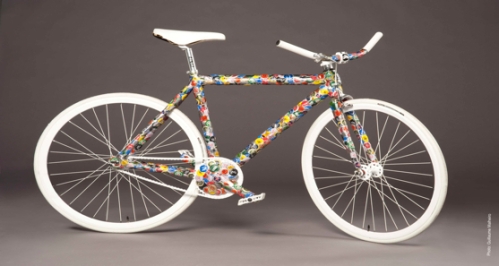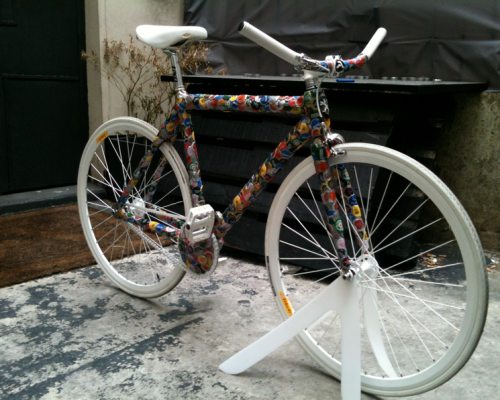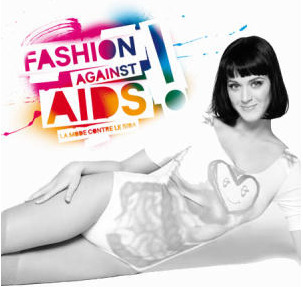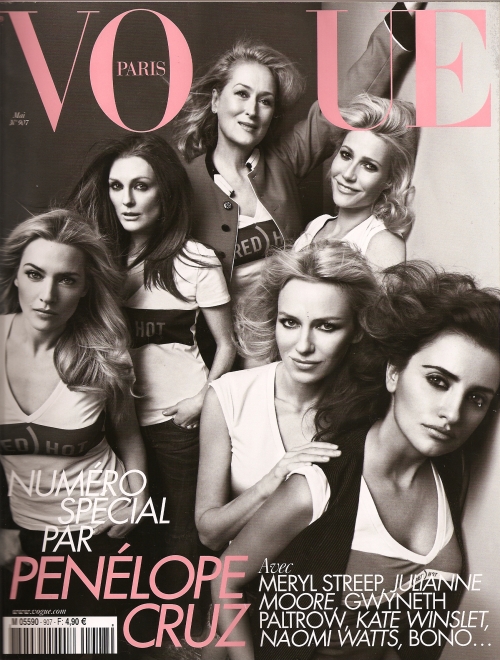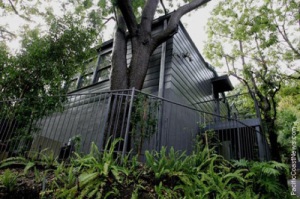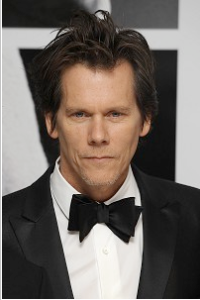As a young girl, Leela Hazzah spent long summers in her parents’ native Egypt, lying awake at night on a rooftop hoping to hear lions in the desert. Her father had slept on the same roof as a child to stay cool and listen to lions roar. “Every summer I would come and wait; I want to say years of waiting,” says Leela, a child’s excitement and frustration alive in her voice. Her father didn’t have the heart to tell her she would never hear them: The lions there had long since been hunted to extinction.

It’s hard to remember that lions, now confined to South and East Africa, used to roam freely across the whole continent, not to mention much of America, Asia, and Europe, too. Leela’s childhood memory of vanished lions was one step on the path that led this vivacious 30-year-old research scientist from Washington, D.C., to spend her time living in a tree house in a remote part of southwestern Kenya, working on strategies to preserve them. And her project couldn’t be more timely. Lion numbers in Africa have fallen by more than 85 percent in the last 20 years. From 200,000 lions 20 years ago, at an optimistic guess, about 26,000 remain. That means, says Leela, “they could well no longer exist in the wild a decade or two from now.”
In a field that, like any other, has members jockeying for funding and recognition, many schemes are afloat to save the king of beasts: compensation for livestock lost to predators; controlled trophy hunting; “translocation,” which involves transporting lions to underpopulated areas; and even cloning. Leela’s idea is radically simple. Since the Maasai—whose lifestyle brings them into constant conflict with lions—have lately been slaughtering them in record numbers, why not flip the switch of Maasai thinking and convert lion killers into Lion Guardians? Forget paying for dead lions, she says. “Let’s pay for lions that are alive! And let’s use the guys who are killing them to do the work.”
(Leela video is avaliable on http://www.oneheartchannel.com/index.php?page=video&vid=1100&auto=1)
On a pleasant afternoon in late July—it is winter in Kenya, which means chilly mornings before the clouds are burned off by lazy sunshine—Leela is presiding over a group of Maasai tribesmen sitting at a table in an open hut at her camp on the Eselenkei conservation area, close to the Porini eco-tourism and safari camp and Amboseli National Park. The region is in the grip of its worst drought in decades. Though giraffe and antelope abound, cattle—the Maasai’s chief source of livelihood—are scarce, having died or been led far away, which means that any alternative employment for tribesmen is more than welcome. Leela understands that the best way forward in conservation is to involve the local community, get people invested in the outcome, and turn it to their economic advantage. She is adamant that the Maasai colleagues she has hired be trained to run the Lion Guardians program once she moves on. “It’s a Maasai-run project,” she says. “We will leave it in their hands. That’s how it will be sustainable.”
The Maasai are picture-perfect and stunningly well turned-out in their traditional red and blue cloths and elaborate jewelry. These are warriors—murrans—and the four at the table have won coveted spots in the initiative Leela devised, which was started three years ago at the neighboring group ranch of Mbirikani. Aided by the ground staff at the camp, they track local lions fitted with GPS collars so as to be able to warn herders if lions are in the vicinity and dissuade tribe members from killing lions, either in retaliation for lost cattle or to enact the time-honored Maasai ritual of lion-spearing as proof of manhood. They have been poring over charts and numbers—none had any formal education before joining the program—and today they are celebrating the completion of the first part of their training. (Later, they will roast a goat around an open fire, carve it expertly with their machetes, and, when they have finished, break into victory songs and dance by jumping up and down and tilting their upper bodies forward.) An eco-warrior herself, Leela is talking to the men in the fluent Swahili she learned at school. Her tone is warm but serious. She congratulates them on their hard work, while emphasizing the responsibility they have undertaken.
As soon as Leela got to Africa, she says, “I finally felt like I fit somewhere.” Her Egyptian heritage made her feel a little out of place in the United States, while her American upbringing was too progressive for her to be fully accepted in Egypt. Plus, she knew from an early age that she wanted to work with wildlife. Coming here, she says, “I felt at home in so many ways. It’s not just like you’re comfortable with the people and the place, but this was my nature. This is what I was supposed to be doing.”
In some respects, Leela is much like any other 30-year-old American career woman. She lives in a chic home, albeit in a tree, in her case designed and constructed pro bono by Todd Oliver, a California-based eco-builder with a soft spot for conservation. The lower floor is a living room, and she and her colleague and roommate Stephanie Dolrenry, a biologist and fellow Ph.D. student (her subject is lions and hyenas) each have a bedroom floor that can be closed from the outside world with green canvas flaps. Copies of The New Yorker are lying around, though the bathroom, a few yards from the house, is open to the sky. And Leela’s small talk is not about the relative merits of HBO shows but instead those of poisonous snakes. “Personally, I’ll take a cobra over a black mamba any day,” she says.
The dangers of her lifestyle are not theoretical. Since the camp is solar-powered, there is no refrigerator in which to store antivenin. When she remembers, Leela wears the dog tag her father sent her in case anything should befall her in the wild. Nairobi, to which she regularly drives seven hours for supplies, is a dangerous city rife with carjackers—her dog Taratibu, a South African mastiff bred to track lions and the size of a lioness himself, is a useful companion on these trips. Conservation in Kenya is nothing if not political, and the country is not always kind to outside “do-gooders.” In 2006, British filmmaker Joan Root was murdered for her efforts at combating poachers in the Rift Valley, and the Italian author Kuki Gallman (I Dreamed of Africa) was attacked by poachers on her ranch in Northern Kenya last June. From a distance, Leela’s existence seems romantic; close up, it’s a tougher proposition.
As for her private life, for now, it’s on hold. “I can’t keep a relationship, because every time I get into one I come back to Kenya,” says Leela, who had an Australian boyfriend in Tanzania from whom she ended up parting ways. “I can’t wait for someone else, make sure I call that person every night. But I’m going to want that sometime soon. I want to have a family and children.”
What brought Leela, a petite, dark, and pretty woman with a ready smile and a cloud of wavy hair, to this place was a phone call five years ago to Laurence Frank, a conservation biologist at the University of California, Berkeley, who had set up the Kenyan conservation project Living with Lions. Now close to finishing her Ph.D. at the University of Wisconsin at Madison on human-carnivore conflict, Leela had at that time done much of her fieldwork with elephants and wanted a change. The recent sharp increase in lion killing by the Maasai was presenting a puzzle for conservationists, and she came along at the right moment to explore it. “I get a lot of inquiries,” Frank recalls, “but Leela’s stood out. She was one of those rare people who came with good experience and excellent Swahili. I told her, ‘We don’t really want to know any more about lions; what we need to know is about the Maasai and what’s going on with them.'”
Leela lived in a Maasai village for a year, chatting with its young men and, with the help of a research assistant, conducting rigorous social-science studies and statistical analysis. Though famously attached to their traditions, the tribe has been butting up against the modern world in abrupt and confusing ways in the past few years. (All the Maasai at Leela’s camp had both cell phones and traditional clubs tucked into their beaded belts.) A recent wave of American Evangelical Christians, less sensitive to local customs than previous missions, has been coming through the region, “actively trying to stamp out the old ways,” says Frank, and undermining everything from the Maasai’s traditional clothing to their belief system. Herding practices have also been eroded by food aid and compensation schemes. And economically, the community has felt excluded from the benefits of tourism.
“Every evening I would have murrans come by and tell stories,” she remembers. “I got to see guys get all dressed up and go out to hunt. We would talk about lion killing, and I was learning more about why they were going out to do it. How could we stop them? Were they bored?” She realized that since available jobs in conservation tended to go to older men in the community, some of the warriors were killing lions just to make a point, and that these young men, already barred from stealing other people’s cattle (formerly a big part of Maasai culture), “had all these skills, but they needed to be used in a positive way.”
To understand the genius of her concept, you have to appreciate what a tremendous source of prestige spearing a lion is for a Maasai warrior. Do it, and you can brag about it for life. Ever after, you are called by the lion name—the Maasai have many of them—that most fits your character. And there are other rewards: After a successful hunting party, as Luke Maamai, a research assistant at the camp, politely puts it, “you can win more ladies.” In other words, you can sleep with any woman you want—they line up for the honor.
Persuading a bunch of hormonal young men to refrain from such excitement clearly requires some fancy footwork—nothing less than reconfiguring an archetype. One of Leela’s methods was, she admits with a laugh, inspired by the crime shows that she loves to watch at home in the United States. “If I weren’t a wildlife biologist, I would be a forensic detective,” she says. “It’s the idea of taking someone back to the scene of the crime so that they can relive what happened.” Warriors who have killed lions return to the sites of the killings. They sit on the lions’ bones and reminisce, describing the event, their feelings at the time, and how they feel about it now. Often this distills a sense of regret and provides, to use a popular term, closure. “Some of them feel like there’s a weight that has been lifted off them,” Leela says.
One such case is Kamunu, a Lion Guardian and three-time lion killer. (His lion name is Meiterienaga, meaning “Always first.”) Kamunu has a dolorous expression and hollowed-out earlobes hung with jewelry. He is proud of his first spearing, although when he reflects on it, he sees only his youth and lack of concern for the future. His second, a retaliatory killing for a livestock raid, landed him in jail with a fine. But it was Kamunu’s third hunting episode that really turned him around. Convinced a pride had eaten some of his cattle, he speared two cubs and slit open their stomachs to prove it. No remains. Kamunu was devastated. He had killed for no reason.
As an intelligent, respected warrior and former lion killer, Kamunu is a catch for the program. He, of all people, can persuade young murrans not to go out to hunt. He understands that lions have become less of a pest than an asset, bringing tourists and money to the region; that lions, as the Maasai, with their love of metaphor, put it, “have become our oil.” Because he is a poor man, this job is important to him and gives him status. Unable to hold a pen when he joined, Kamunu is getting a basic education. And besides the pen, he has grasped the bigger concept of the benefits lion preservation can offer his community, a message others are starting to agree with. Leela is convinced that Kamunu and his colleagues would never kill another lion. “I will bet my study on it.”
Funded solely by grants and private donations, Leela’s program, says Luke Hunter, executive director of the wild-cat charity Panthera and one of her sponsors, “is potentially one of the most important ideas I’ve seen come along since I’ve been working in this field. She’s able to immerse herself in the Maasai culture with terrific respect and sensitivity.” Her program, he says, maintains the murrans‘ “pride, their status, and their role in the community. It’s really novel and really clever.”
Others have also taken notice, and there is hope that her model might just make a major contribution to wildlife preservation far beyond her immediate sphere. This spring Leela won an award for her original research from the female-explorers’ organization Wings WorldQuest. Says the actor Anthony Edwards, a supporter of the charity, “Her intelligence allows her to understand both sides, and her strength of vision will not allow her to quit.”
Just how excited Maasai get around lions is apparent the next day, when Leela and Stephanie set out mid-morning to try to collar a male lion who has been preying on nearby cattle. The male hangs out with a couple of lionesses, one of whom is collared, and the five cubs they have between them. In the late afternoon we get a call: They have found the lions, and we set off with our guide and a jeepload of Lion Guardians who can barely refrain from chattering or using their cell phones. If we succeed in sedating the lion, they will hold it and have their photos taken with it, all of which adds to the sense of investment in the lion and its welfare.
We drive for an hour and a half off-road among thorny acacia bushes, following Stephanie’s tire tracks past the crater-like footprints of passing elephants and the trees they have devoured with a couple of bites. Eventually we see the pride: the females and their cubs playing in the long grass and the male, a majestic specimen who has already survived two spearing attempts, strutting past a few feet from our open land cruiser before making a desultory attempt at humping one member of his small harem.
To dart the lion, Stephanie needs a clear shot, and the big cat-and-mouse game she and Leela have been playing all day continues as darkness falls and the lion camouflages himself in bushes and trees. Finally the pride gathers around a zebra carcass, and Stephanie sends out a dart clearly silhouetted in the brightness of the floodlights on her land cruiser. The male shoots up and starts running, but instead of falling down after a few paces, he continues, dashing into the bushes. The lion, it seems, was a miraculous creature, completely unaffected by the sedative. Though it was the maximum dose permitted, he was large and too well fed, Leela speculates, for it to have taken effect. (While afflicting many animals, the current drought is a boon for lions: Zebras are dropping left and right, ready for the taking.) The team will wait until another day to try again, after the lion has been mating for a while and his reserves are depleted.
The final piece of Leela’s ritual-bending concept is that the Maasai, instead of taking the name of the lion they kill, will name the lions they are monitoring. We are told they have come up with a good name for this one: Lucky.
learn more and watch the report on Great work of Leela on http://www.oneheartchannel.com/index.php?page=video&vid=1100&auto=1
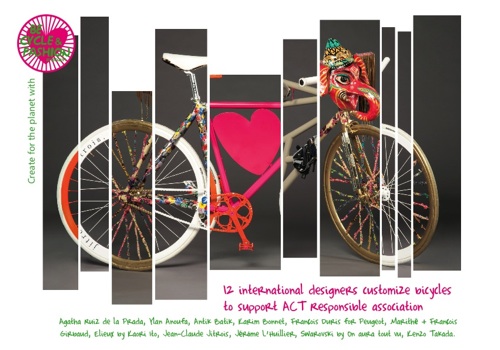 Because now sustainable development has become a lifestyle and a source of daily inspiration, Idenium press office, the environmental & humanitarian media One Heart Channel and Sylvie Burger Conseil have called up great names in the fashion and design world : Agatha Ruiz de la Prada, Ylan Anoufa, Antik Batik, Karim Bonnet, François Duris, Marithé et François Girbaud, Elieux by Kaori Ito, Jean-Claude Jitrois, Jérome L’huillier, Swarovski by On aura tout vu, Kenzo Takada… who have kindly agreed to support the operation Be Cycle & Fashion by customizing THE ultimate symbol of environmental responsibility: a bike!
Because now sustainable development has become a lifestyle and a source of daily inspiration, Idenium press office, the environmental & humanitarian media One Heart Channel and Sylvie Burger Conseil have called up great names in the fashion and design world : Agatha Ruiz de la Prada, Ylan Anoufa, Antik Batik, Karim Bonnet, François Duris, Marithé et François Girbaud, Elieux by Kaori Ito, Jean-Claude Jitrois, Jérome L’huillier, Swarovski by On aura tout vu, Kenzo Takada… who have kindly agreed to support the operation Be Cycle & Fashion by customizing THE ultimate symbol of environmental responsibility: a bike! 
